#Korean Folklore
Explore tagged Tumblr posts
Text

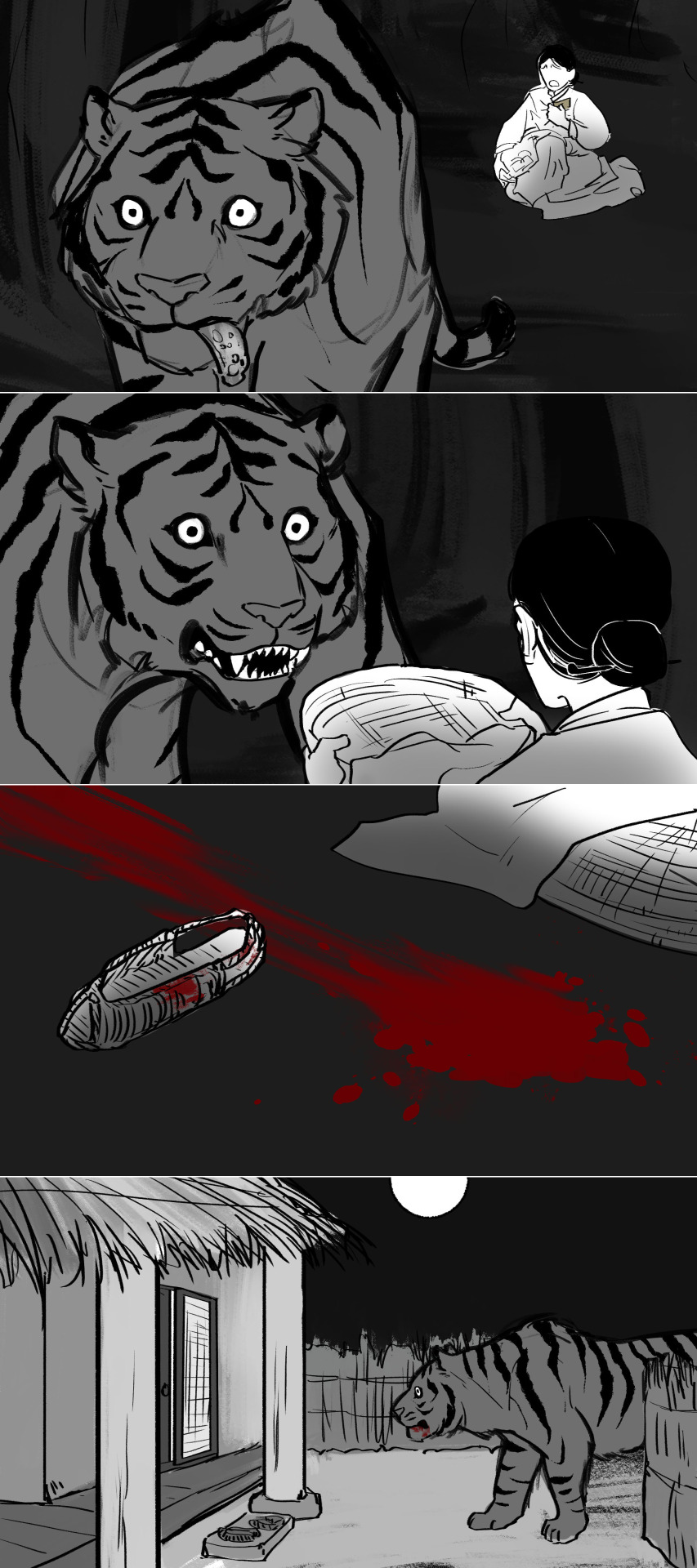
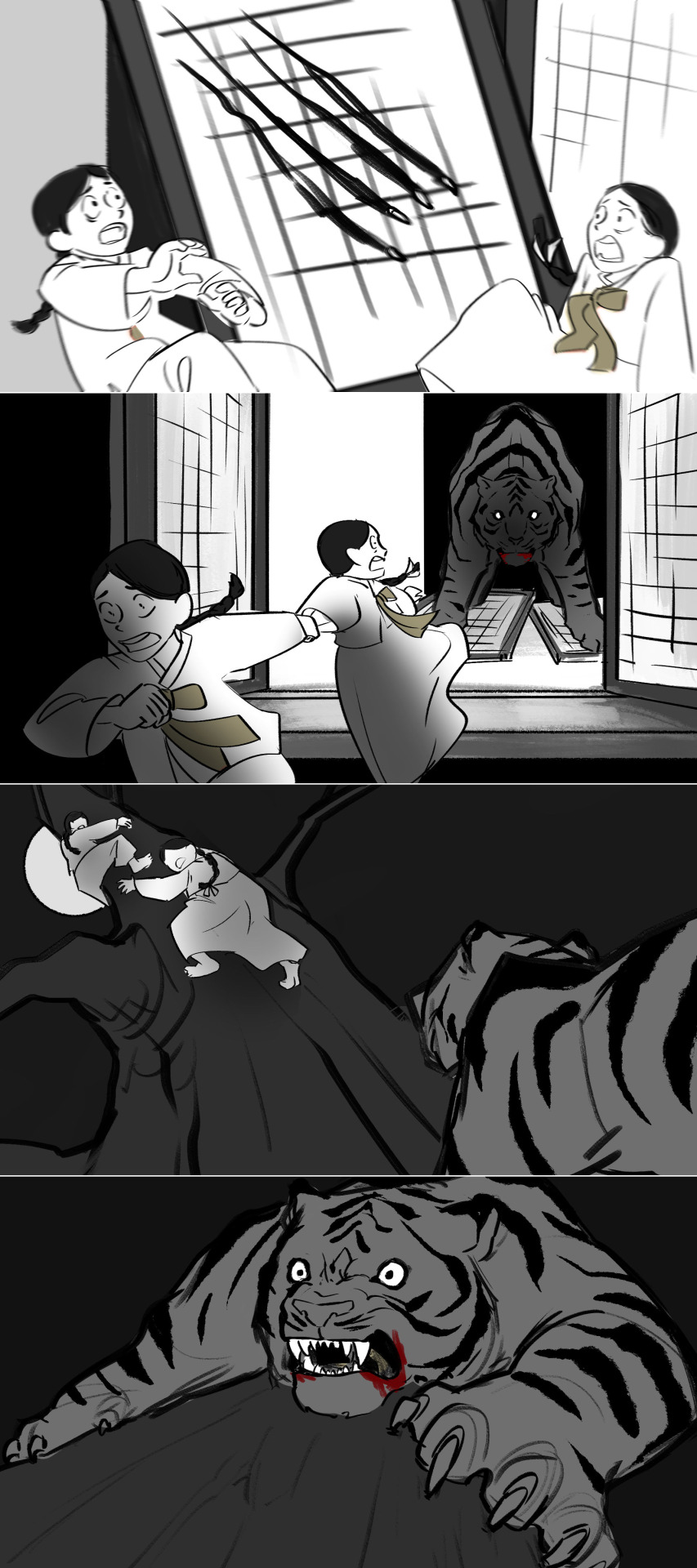


Storyboarding assignment: Make a 'beat board' out of a fairytale or folk tale.
We were allowed to modify the stories we chose, so I worked with The sun and the moon (a Korean folktale) except I made it take a more vengeful turn.
#No I will not explain the story#Just read the article I linked#I've slept three hours in two days#original art#folktale#korean folklore#tiger#tigers#blood tw#death tw#schoolwork#snake's art
697 notes
·
View notes
Text
When AI is so prevalent everywhere nowadays that even Death starts to invest in cheap grim reaper robots /j (that keep eventually gaining sentience and becoming spiteful and lost spirits but shhhh, that's too much lore)
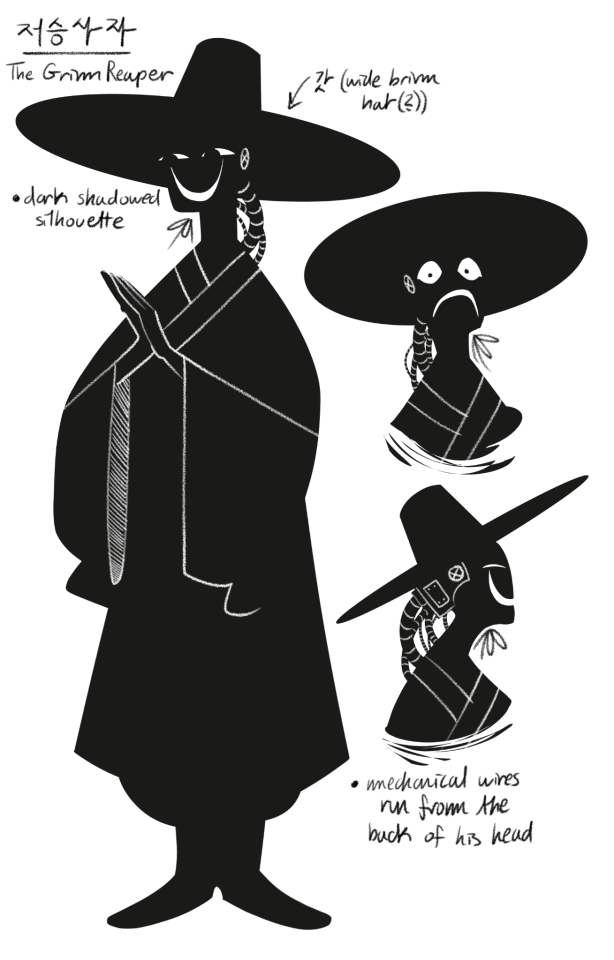
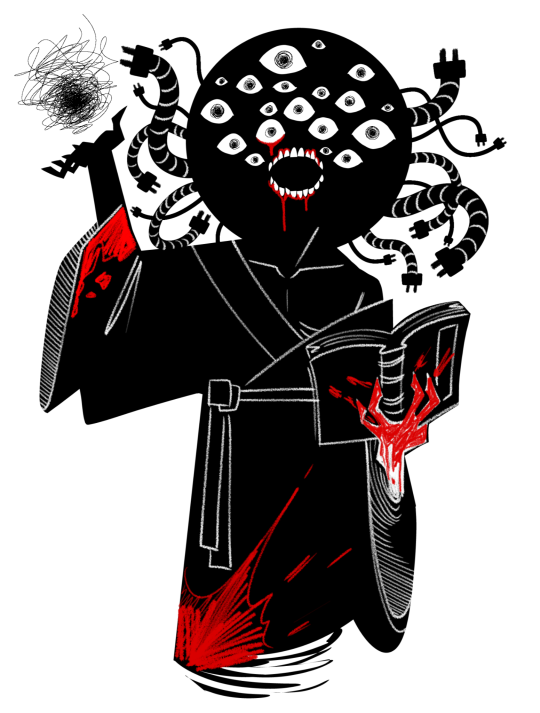
Inspired by the Korean folk lore of Death: 저승사자- a psychopomp deity who's job is not to judge or kill, but to simply guide newly deceased souls to the afterlife. They are traditionally depicted wearing a black (한복) hanbok with a black (갓) gat.
#Here's your daily cultural fun fact ig!#let's combine otherworldy deities with mahcanical body horror eyyyyy#my art#artists on tumblr#death#grim reaper#death design#character design#저승사자#korean folklore#korean culture#tw body horror#tw staring#tw scopophobia#tw blood#Muck and Death
155 notes
·
View notes
Text
한국 전래동화에 나오는 어회와 문법 ! - Vocabulary and grammar in traditional Korean fairytales !
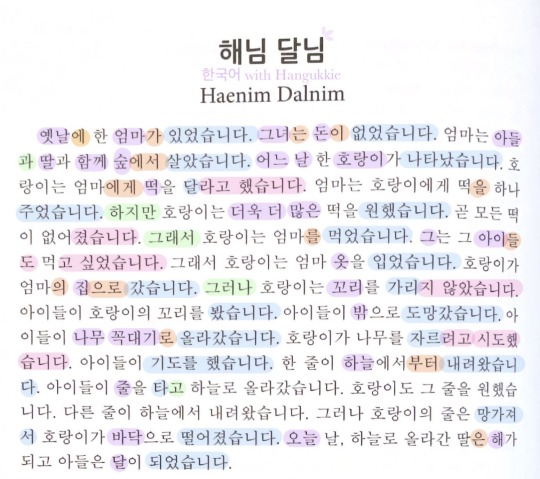
English Translation:
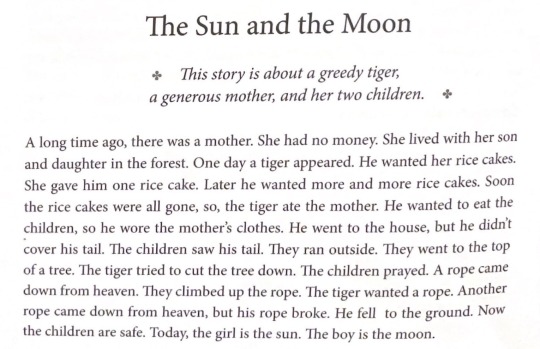
———————————————————
Vocabulary:
옛날 - Olden days
옛날에 - Once upon a time
어머니/엄마 - Mum
그녀 - She/Her
돈 - Money
아들 - Son
딸 - Daughter
함께 - Together
숲 - Forest
어느 - Which
날 - Day
호랑이 - Tiger
떡 - Rice cake
더욱 더 - More and more
많이/많은 - Many/A lot
그 - He/Him
아이 - Kid/Child
아이들 - Kids/Children
옷 - Clothes
집 - House
꼬리 - Tail
밖 - Outside
나무 - Tree
꼭대기 - The top
하늘 - Sky
줄 - Rope
바닥 - Floor
오늘 - Today
해 - Sun
달 - Moon
Grammar - Verbs:
있다 - To exist
없다 - To not exist
살다 - To live
나타나다 - To appear
달다 - To ask/To request (In this context)
주다 - To give
원하다 - To want/To wish/To desire
먹다 - To eat
가다 - To go
가리다 - To cover
보다 - To see
도망가다 - To run away
올라가다 - To go up
자르다 - To cut
기도를 하다 - To pray
내리다 - To get off
떨어지다 - To fall
된다 - To become
Grammar - Sentence Forms:
라고 하다 - For indirect quotations
지다 - To become
도 - Too/Also/As well as
고 싶다 - To want
지 않다 - Is not
려고 - To intend to
시도하다 - To attempt to
Grammar - Connectives:
과 - And/With (With 받침)
하지만 - But
그래서 - So
그러나 - But/However
하고 (고) - And/With
Grammar - Markers/Particles:
에 - To/At (Location and time marker)
가 - Subject particle
는 - Topic particle
이 - Subject particle (With 받침)
에서 - At/In/On/From (Location marker)
에게 - To/For
을 - Object particle (With 받침)
를 - Object particle
들 - Plural marker
의 - Possessive marker
으로 - By/As/For/To/Towards/With (Directional marker)
로 - By/As/For/To/With (Directional marker - with 받침)
부터 - From/Since (Location and time marker)
은 - Topic particle (With 받침)
#korean language#korean langblr#korean#langblr#korean study blog#korean studyblr#study blog#studyblr#korea#korean vocab#korean vocabulary#korean vocab list#Korean stories#Korean fairytales#Korean folktales#korean folklore#한국#한국어#한국어 공부#한국어 읽기#한국어 어휘#한국어 단어#한국어 문법#공부#읽기#어휘#단어#문법#한국 전래동화#전래동화
462 notes
·
View notes
Text
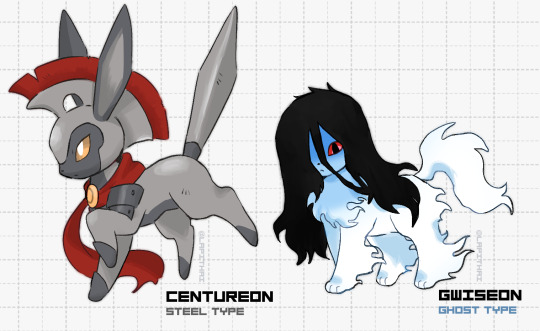
Centureon, the steel type eeveelution! Along with the ghost type, Gwiseon~
174 notes
·
View notes
Text
Legendary creatures: Kitsune, Kumiho, hồ ly tinh, and huli jing
Fox spirits such as kitsune (狐, きつね) of Japan, kumiho (Hangul 구미호 or Hanja 九尾狐) of Korea, hồ ly tinh (狐狸精) of Vietnam, or huli jing (狐狸精) of China are shape-shifting fox spirits, usually having nine tails. They are typically tricksters that can be either benevolent or malevolent.

By Unknown painter from late 4th to mid 5th century A.D., unknown photographer - http://www.sohu.com/a/193975015_556515, Public Domain, https://commons.wikimedia.org/w/index.php?curid=73024755
The oldest version of the nine-tailed fox spirits was from China. The first story that has the juli jing was the Shanhaijin (山海经 Classic of Mountains and Seas) which was compiled sometime in the fourth century BCE, but the currently known form wasn't completed until the early Han dynasty (202 BCE - 9 CE). It contained stories fables of the pre-Qin dynasty (prior to about 700 BCE). It says '靑丘國在其北其人食五穀衣絲帛其狐四足九尾。 The Land of Blue Hills lies to the north where the inhabitants consume the Five Grains, wear silk and worship foxes that have four legs and nine tails.' The nine-tailed fox was seen as a good omen, only appearing in times of peace. However, it also says 'Three hundred li [150km/93.2 miles]farther east is Qingqiu Mountain, where much jade can be found on its south slope and green cinnabar on its north. There is a beast here whose form resembles a fox with nine tails. It makes a sound like a baby and is a man-eater. Whoever eats it will be protected against insect-poison (gu).' During the Han dynasty, the mythology added the ability to shape-shift into humans as they became older, one description of which was by Guo Pu (郭璞, 276-326 CE) 'When a fox is fifty years old, it can transform itself into a woman; when a hundred years old, it becomes a beautiful female, or a spirit medium, or an adult male who has sexual intercourse with women. Such beings are able to know things at more than a thousand miles' distance; they can poison men by sorcery, or possess and bewilder them, so that they lose their memory and knowledge; and when a fox is thousand years old, it ascends to heaven and becomes a celestial fox.'
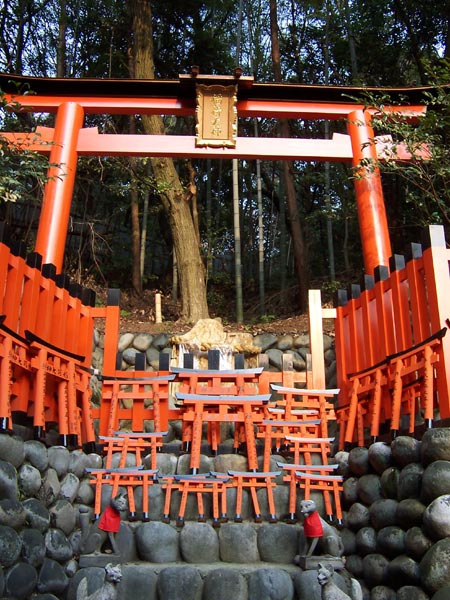
By Chris Gladis (MShades) from Kyoto, Japan - Flickr, CC BY 2.0, https://commons.wikimedia.org/w/index.php?curid=748434
Fox worship arrived in Japan sometime during the Jomon period (14,000-300 BCE) as evidenced by necklaces including canine teeth and jawbones of foxes. Stories from China were brought to Japan by merchants who traded and brought in as kyuubi no kitsune (九尾の狐, nine-tailed fox). In the Nihon Shoki (日本書紀, the Chronicles of Japan), which is the second-oldest book of Japanese history, mentions foxes twice, both times as omens. It records that in 657 a byakko (white fox) in Iwami Province was a good omen. In 659, a fox bit a vine a construction worker and it was seen as an ill omen. There were tales of kitsune turning into kitsune nyoubo (狐女房 fox wife) that are revealed as foxes after pet dogs that were recorded in the Nihon Ryouki (日本霊異記) book of fables during the Heian period (recorded between 787-824).

By Hùng Phong Lê - Hùng Phong Lê, Public Domain, https://commons.wikimedia.org/w/index.php?curid=134883158
The Hồ ly tinh have specific ages that they have to reach to gain their tails. They must practice for a hundred years to have three tails and be considered a 'demon fox', for a thousand years to become a 'ghost fox' with six tails. When it gains nine tails, it's considered a 'celestial fox' and can turn its tails into humans. If the fox loses its tail, it dies. In the Đại Việt sử ký toàn thư (chữ Hán: 大越史記全書, Complete annals of Đại Việt), compiled in 1697, states that Emperor Lê Thái Tổ was saved by a hồ ly tinh when he was hiding in Lam Sơn from the Ming army. He took the time during his hiding to bury a girl in a white dress and that a white fox distracted the army when he was almost caught.
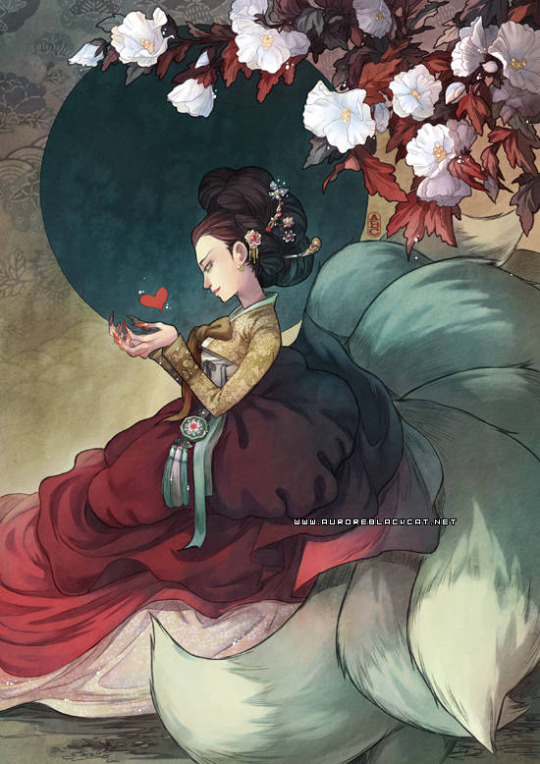
source: https://www.deviantart.com/auroreblackcat/art/Gumiho-283762936
The kumiho are able to become beautiful women who seduce men to eat their liver or heart. The Chinese story entered into Korea during the Three Kingdoms period (삼국시대, from about 494-562) and state that foxes become kumiho with great age and become stronger with that age, too. The kumiho were largely viewed neutrally, though self-centered in their need for human organs and souls. It wasn't until later that they were viewed as evil, bloodthirsty fox-human hybrids that might turn into humans if they can avoid eating human flesh for a thousand years. Something unique to the kumiho is that they develop and pass along 'yeowoo geseul' (여우구슬, 'fox marbles' that they give to and then take back from humans by an action that looks like kissing. It can only remain in the human part of the chain for a year before it can kill them completely. When it's returned to the fox part of the chain, the human has no memory of the yeowoo guseul or the kumino.
#kitsune#kumiho#huli jing#hồ ly tinh#nine tailed fox#spirit foxes#japanese folklore#chinese folklore#vietnamese folklore#korean folklore#legendary creature
27 notes
·
View notes
Text
Just read Small Gods of Calamity and it was SO GOOD
This book is emotionally devastating in all the right ways. I loved it so much!! The magic system is so cool and the characters are fantastic. It's also one of the very few books I've read with a canonically ace main character, which is always nice. You should definitely read it if you're into urban fantasy, mysteries, horror, or Korean and Japanese folklore.


#sam kyung yoo#small gods of calamity#book recommendations#book recommendation#book rec#urban fantasy#queer books#korean folklore#japanese folklore#horror books#my posts#ace representation
14 notes
·
View notes
Text

Spirits bound in servitude to the tiger that killed them. They typically seek freedom to die in peace by bringing their master a new victim in exchange.
#BriefBestiary#bestiary#digital art#fantasy#folklore#legend#ghost#spirit#changgwi#korean folklore#korean legend#korean ghost
16 notes
·
View notes
Text
Korean folk tales are actually hilarious sometimes, bc the tigers keep getting owned by humans. You can immediately tell my ancestors really REALLY disliked tigers.
(To be fair, they did eat livestock & occasionally hurt humans.)
#that one (lesser-known) tale abt the butcher guy is both kinda gorey and wildly hilarious#dudebro got swallowed by a tiger along w/ a bunch of other ppl and they HAD A WHOLE FUDGIN BARBEQUE with the innards of the tiger#korean folklore#Lilly's Korean stuff🇰🇷#tiger#tigers
21 notes
·
View notes
Text




178 notes
·
View notes
Text
i kinda wanna write a new fic (has not written in ages)
so basically my idea is like a folklore au where its based off the Korean folktale of the heavenly maiden and woodcutter (like loosely based, some stuff is gonna be changed and i want to give them a happier ending cause i cant do tragedies lol. angst sure but sad endings no) where aziraphale is the angel (obvi) and crowley is the woodcutter.
idk if anyone would be interested in that though lol. still gonna do it anyways. i thought up this idea a month or two ago. this is one of the few folktales i know/remember.

#good omens#gomens#ineffable spouses#good omens aziraphale#good omens crowley#good omens fanfiction#ao3 fanfic#happy pride everyone#might reblog with some doodles later#korean folklore
12 notes
·
View notes
Text
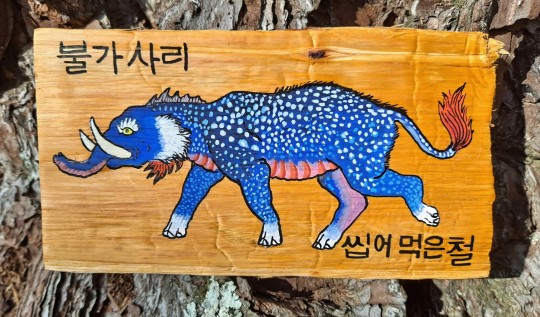
The Bulgasal (불가살) is described in Korean classic literature as a creature that is impossible for mortals to kill. It is a blood-thirsty beast that grows bigger the more metal it eats. And so, as brave knights approach the beast, it slaughters the men, devours their weapons, and grows only stronger. Bulgasal paintings can be found on folding screens and chimneys in old Korean houses. It is believed that honoring the spirit of the monster protects people against natural disasters and fires.
A cedar tree got downed by a recent storm so I'm having fun with bark
33 notes
·
View notes
Text
Tfw when your robotic grim reaper is bugging out so you gotta use the good old percussive maintenance to fix it (spoiler alert: it did not work)
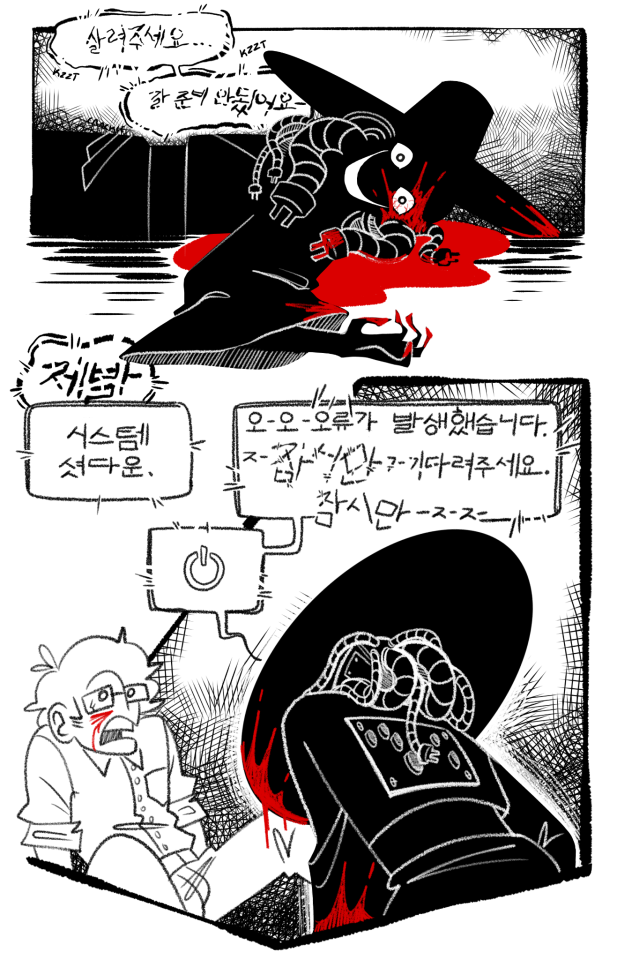
In an attempt to keep up with the fast changing times and the rising human population, Death starts to invest in cheap mass-produced Grim Reapers in an attempt to modernize The Afterlife. Unfortunately, the shoddy craftsmanship often leads the Reapers to malfunction and occasionally target the wrong people.
Said wrong targets are... not as enthusiastic to peacefully join the malfunctioning Reapers (case in point: blunt force trauma via baseball bat).
English translation under cut:
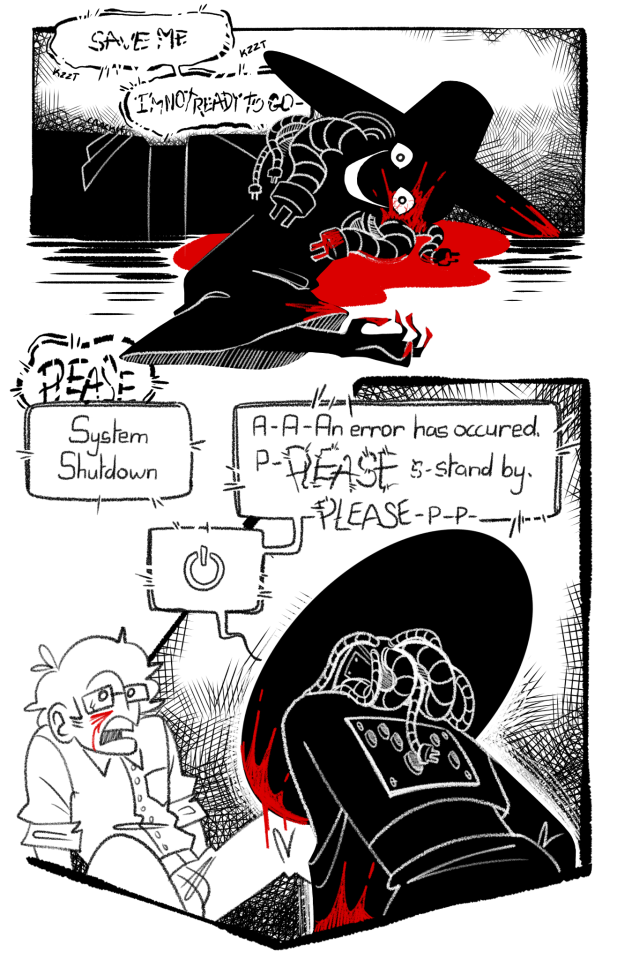
#my art#silly little story of mine :)#character design#death design#death#the grim reaper#저승사자#korean folklore#korean culture#practicing my korean while I'm at it lmao#tw blood#tw staring#tw scopophobia#tw body horror#Muck and Death
64 notes
·
View notes
Text
Tiger Brother is like, "what if we take something like Inuyasha, but make it with TIGERS, instead of dog, and focus more on the yokai."
Definitely needs a full English release at least already cause the plot is interesting and the dokkaebi/yogoe (yokai) have cool designs fr.



5 notes
·
View notes
Text
Cursed by Love: The Story of a Broken Spirit
What else is there to say in this world, besides hurling curses? I asked myself that question. Having lost everything, all that remained was anger, despair, and an endless stream of profanity. “18! Damn witch!” That was the nickname I gave myself—a woman too despicable to live. No, in truth, I deserved to die. A lunatic like me had no right to exist. I had willingly hurled myself into the…

View On WordPress
#Ancient Rituals#Curses#Dark Fantasy#Dogs#English Shamanism#Epic Showdown#Family Secrets#Ghosts#Haunted Places#Korean Deities#Korean Folklore#Korean Ghosts#Korean Web Novel#modern fantasy#Mystery#Mythology#Reincarnation#Revenge#Spiritual Journey#Supernatural#Urban Legends#Vengeful Spirits
2 notes
·
View notes
Text
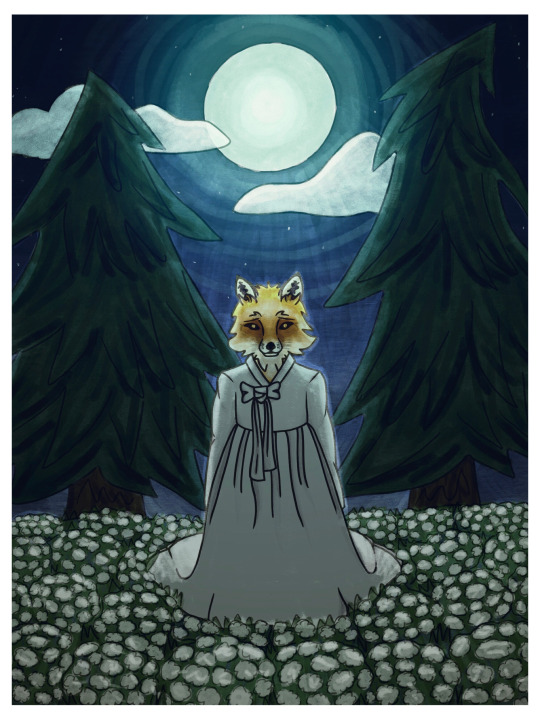
the runaway stable girl the folk hero
#park mina#halcyon#original character#kumiho#kumiho art#folklore#korean folklore#hanbok#fantasy art#kitsune art#illustration#digital art#whimsical art#kitsune#huli jing#gumiho#gumiho art
5 notes
·
View notes
Text
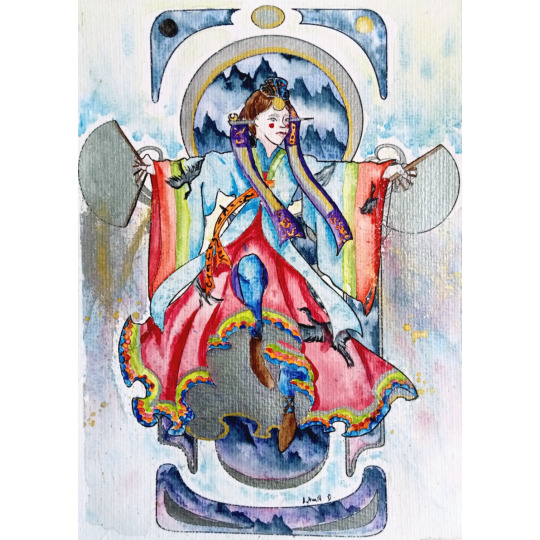
Second Wushu Moon Deities of the year, the Korean: Myeongwol
#traditional art#my art#art#wushu#watercolor#aquarelle#artwork#kungfu#moon goddess#moon#deity#myeongwol#korean goddess#korean folklore#fan
5 notes
·
View notes